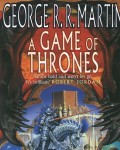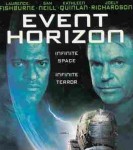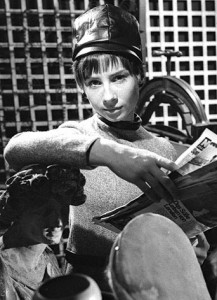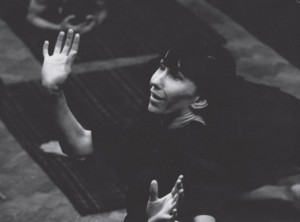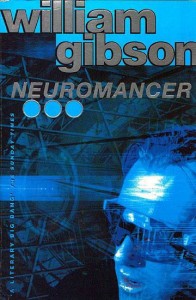
Published only after her death in 1886, Because I Could Not Stop for Death is a tiny masterpiece by the American poet Emily Dickinson. Its effect is completely disproportionate to the scale and manner of the poem itself, as is the concept with which an apparently disarming rhyming-scheme is dealing.
The poem plays with time, or the perception of it: the narrator is far too busy for her activities to be halted even by Death, although it appears Death stops to collect her.
Because I could not stop for Death,/ He kindly stopped for me;/ The carriage held but just ourselves/ And Immortality.
The second verse then settles and creates a sense of calm, as the narrator escapes from the hectic passage of everyday time :
We slowly drove, he knew no haste, / And I had put away / My labour, and my leisure too, / For his civility.
The next verse continues the idea of time slowing and stretching, as well as portraying different times of the day: the morning of school, the lazy haze of a field of wheat as the afternoon and the setting sun of the evening creating a warm, pastoral image
We passed the school where children played,/ Their lessons scarcely done;/ We passed the fields of gazing grain,/ We passed the setting sun.
The carriage stops beside her grave, which she calmly seems not to recognise:
We paused before a house that seemed/ A swelling of the ground;/ The roof was scarcely visible,/ The cornice but a mound.
But it’s the final verse that really takes your breath away. Time suddenly contracts: there’s almost a sense of pausing, of suddenly becoming still as the narrator realises that she is dead, and the journey in the carriage is without end.
Since then ’tis centuries; but each/ Feels shorter than the day / I first surmised the horses’ heads/ Were toward eternity.
The same sense of dawning realisation which is striking the narrator is also striking you as the reader. It really is like being dashed in the face by cold water. The first time I read the poem, I felt slapped in the face: the implications of that last verse absolutely brought me up short.
For me, this is akin to walking through a room and out onto a balcony: suddenly the view before you unfolds across a wider plane, and you realise the context in which you had been reading before is operating at a much larger scale than you could have previously imagined. As great poetry can, from Shakespeare’s sonnets to Larkin’s musings on misery, the focus of the poem shifts in a flash from the specific to the universal in a way that pulls you up short and makes you reconsider.
(There’s a setting by composer John Adams of the poem, as part of his piece Harmonium, which you can preview on his MySpace page here: click to open in pop-out player).
Short, deft but astonishing: Dickinson’s poetic strengths in a nutshell.
Posted by Daniel Harding, Deputy Director of Music at the University of Kent. Click here to view his Music Matters blog.


